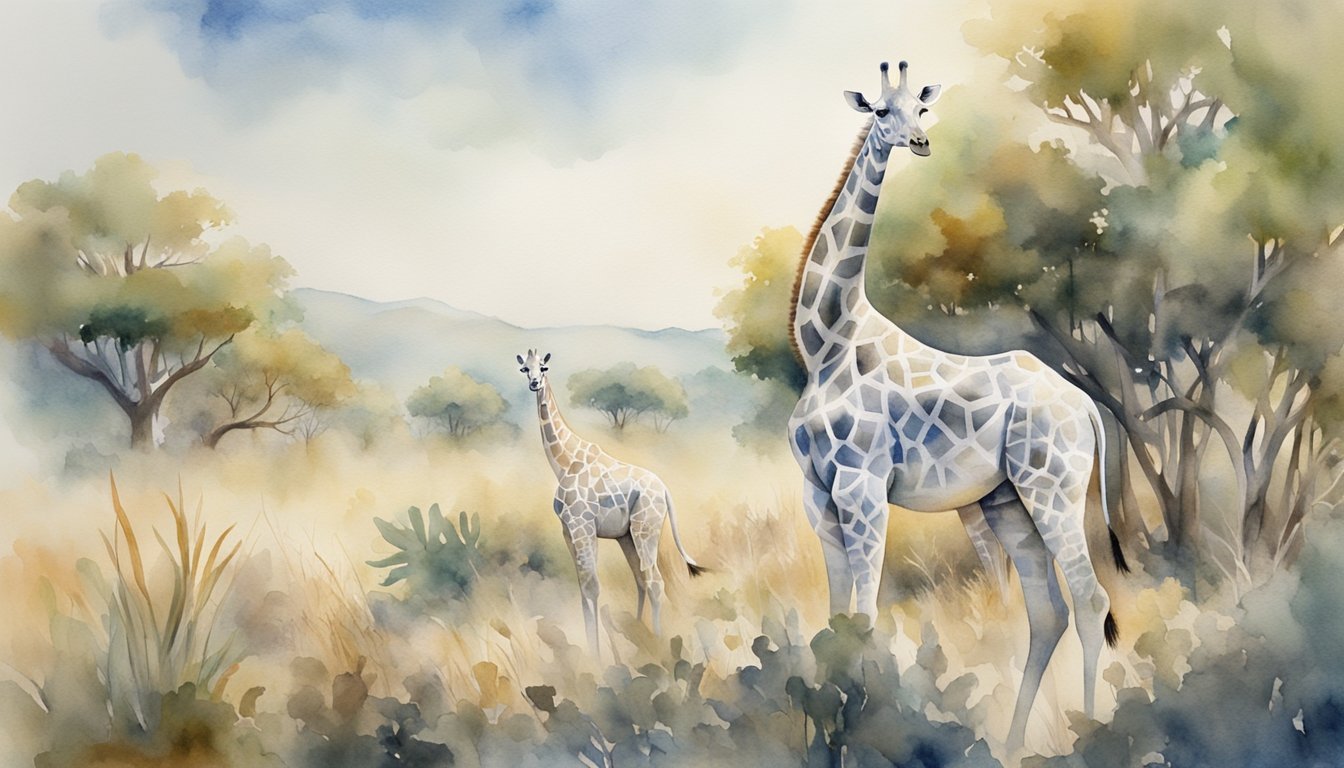Understanding the White Giraffe
Defining Leucism
The white giraffe is a rare and unique wildlife phenomenon characterized by a partial loss of pigmentation. This genetic condition, known as leucism, affects not only giraffes but also a variety of other animals. Leucism is different from albinism, which is a complete loss of pigmentation and results in red or pink eyes. White giraffes, on the other hand, often retain normal eye color, indicating that it is not a case of albinism.
Habitat and Location
White giraffes are primarily found in Kenya, where they have been spotted in recent years. Connections have been made between their appearance and the need for conservation of their habitats. These giraffes are found living in protected wildlife sanctuaries, such as the Ishaqbini Hirola Sanctuary in northeastern Kenya, which works closely with local communities to ensure the animals’ safety and well-being. The sanctuaries play a crucial role in the distribution and preservation of such rare and extraordinary species.
Genetics Behind White Giraffes
The appearance of a white giraffe is due to a genetic trait known as leucism. This condition occurs when there is a partial loss of pigmentation in an animal’s skin, fur, or feathers, often resulting in white patches. Leucism is a heritable condition, which means it can be passed down from one generation to the next. While the exact genetic mechanisms behind leucism remain to be fully understood, it is clear that it is a complex genetic trait influenced by multiple genes and environmental factors.
White giraffes are a fascinating example of the diverse wildlife and genetic variations found in nature. Their presence highlights the importance of conserving unique habitats and protecting these rare creatures for future generations to admire and study.
Conservation Efforts and Challenges

Poaching and Population Decline
White giraffes have been facing threats, mainly due to poaching and population decline. Population decline has been a significant concern for conservationists working to save these gentle giants. The International Union for Conservation of Nature has classified giraffes as vulnerable on its Red List. The population decline has mainly been due to habitat loss and poaching.
Role of Conservancies
Several organizations have come forward to protect and conserve white giraffes and other giraffe species. Organizations like the Ishaqbini Hirola Community Conservancy and Northern Rangelands Trust have been instrumental in supporting grassroot level conservation efforts. Additionally, conservancies often employ rangers to safeguard the giraffes and their habitats from threats such as poachers.
Future Prospects and International Involvement
The future of white giraffe conservation depends on the involvement of various organizations and stakeholders. Initiatives like GPS tracking devices have been installed on giraffes to keep track of their movements and deter poaching attempts. Moreover, the Kenya Wildlife Service has been working with organizations such as Save Giraffes Now for the cause.
International involvement can make a significant difference in white giraffe conservation. Giraffe Conservation Foundation works closely with national governments, NGOs, and academic partners throughout Africa to implement Giraffe Conservation Strategies, ensuring that the efforts aim for the survival of this beautiful species.

